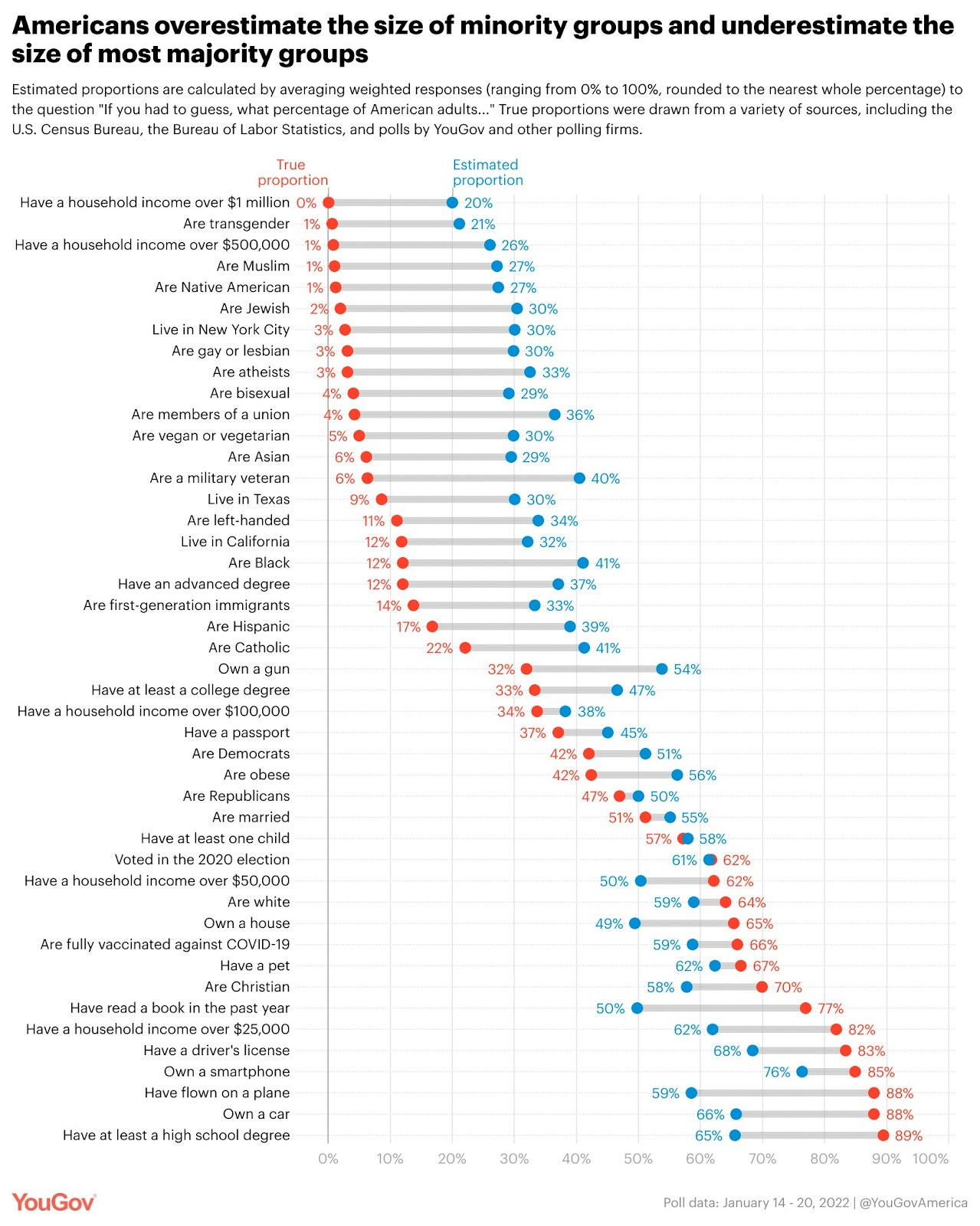3BI: AI Backfires, Policy Sludge, and Perception vs Reality
Welcome to my 3BI newsletter, where I share three insights from the world of behavioral science on psychology, decision-making, and behavioral change.
Did someone forward this newsletter to you? Sign up here to have every new edition delivered straight to your inbox.
Hello everyone! Back after a short break while life got busy, but have a lot of interesting stuff to share in the coming weeks. Let’s get to it.
AI isn’t ready to take our jobs after all
Two years ago, Klarna, a Swedish fintech company specializing in "buy now, pay later" (BNPL) services, announced that they wanted to be at the forefront of AI and would be instituting a hiring freeze to begin using it to replace human workers.
A year later, the company said that AI was already doing the work of 700 customer service agents and handling two-thirds of all customer service chats. Fast progress!
This month, however, the company changed its tune:
Klarna’s [CEO Sebastian] Siemiatkowski tells Bloomberg the fintech company is about to go on a hiring spree in order to ensure customers will always have the option to speak to a live representative.
…
“As cost unfortunately seems to have been a predominant evaluation factor when organizing this, what you end up having is lower quality,” Siemiatkowski said. “Really investing in the quality of human support is the way of the future for us.”
This is a good example of why I’m skeptical that AI will replace human work as quickly as many seem to be anticipating (or fearing). It highlights two issues with the idea.
For one, most knowledge work jobs are more complex than we realize and difficult to automate. Predictions that AI will take our jobs tend to “underestimate the complexity of the work that people actually do — just as radiologists do a lot more than reading scans,” according to David Autor, a labor economist at the Massachusetts Institute of Technology. Even customer service, which seems like a logical function for AI, has a wide variety of edge cases and communication issues that are difficult for a strict rule-following computer to process.
Second, consumers generally prefer interacting with real people. While an AI customer service bot can handle simple, straightforward issues well, it becomes much more frustrating than speaking with a human when the problem is even slightly unclear. More often than not, you’re probably seeking help because your issue isn’t straightforward, but at least slightly complex!
I can see many companies settling on a mix of AI and human employees for functions like customer service, where an AI bot acts as the first step to identify the issue, but can quickly transfer to a person if the problem isn’t quickly resolved. I think this is what AI will look like in the workplace for a while: a sophisticated tool to enhance human work, rather than a replacement.
“Common Sense” policies can create Sludge
One of the key topics of the recent government budget discussions is work requirements for Medicaid, which require certain recipients to engage in work-related activities—such as employment, job training, or community service—as a condition of receiving health coverage.
On the surface, this seems fairly logical and common sense. Why should otherwise healthy people get taxpayer funded healthcare if they won’t work? Indeed, the policy is pretty popular among the public with around 50-60% supporting the idea according to opinion polls.
In reality, such simple and seemingly common sense ideas often aren’t as straightforward in practice.
For one, work requirements address a problem that doesn’t seem to exist in a notable way. According to a 2023 study, 92% of Medicaid beneficiaries ages 19 to 64 are either working, attending school, caregiving, or suffering from a disabling ailment. The remaining 8% of Medicaid covered adults reported that they are retired, unable to find work, or were not working for another reason. So, the percentage of recipients who are able to work but aren’t is pretty small, and other research has found that access to affordable health insurance has a positive effect on people’s ability to obtain and maintain employment.
We also tend to underestimate the costs of administration and compliance with such requirements. In 2018, Arkansas imposed work requirements on its Medicaid beneficiaries and found that it actually cost the state and federal government $26.1 million because the new administrative burdens for implementation were not offset by an increase in employment that would grow tax revenue.
It also resulted in 16,000 residents losing their health coverage - 92% of which were actively working! This is because the added paperwork for meeting the requirements can be surprisingly complex and cognitively taxing. Low-income jobs often don’t have the best record keeping, making it difficult to obtain proper documentation and the poor are already more cognitively taxed due to scarcity of resources, making seemingly simple tasks more burdensome.
Administratively burdensome policies like this are a good example of sludge – decision-making obstacles that deter people from completing intended actions. Sludge doesn’t have to be intentional - in fact, it’s often well-intended! That’s why we need to rigorously evaluate outcomes, though. What sounds common sense in our minds may not be so simple in the real world.
Our perception is not reality
This chart from YouGov is a fascinating view into how our perception misjudges reality:

We really aren’t great at estimating true proportions and occurrences in the world. This isn’t that surprising when you consider how little of the world we really get to see and experience for ourselves, but it is still easy to forget.
Our perception is still important, but we should remember its imperfections and question why it may not align with data.

